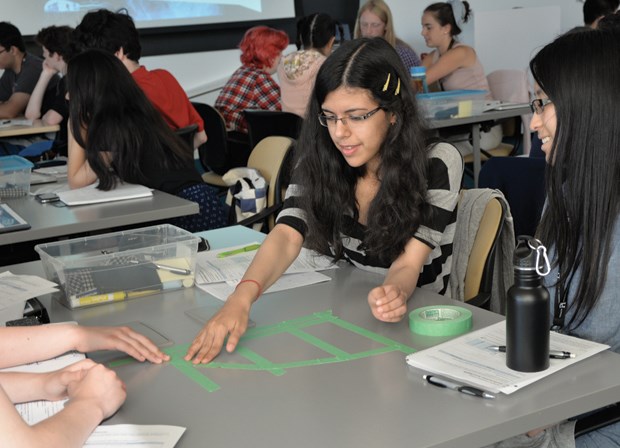It started with a love of roller skating while growing up in Iran.
Now Carson Graham grad Anita Mahinpei is wrapping up two weeks studying alongside the world’s elite at the Perimeter Institute’s International Summer School for Young Physicists in Waterloo, Ont.
Mahinpei credits her Grade 6 teacher making the link between her hobby and the contents of her science textbook.
“Basically, she used roller skates to explain Newton’s laws and how my passion for roller skating was related to physics,” she said. “I found it really cool how physics could explain everyday stuff that we do.”
From there, her teachers encouraged her by offering physics texts beyond what the curriculum required. When she reached Grade 9 and moved to Canada, Mahinpei was watching advanced lectures on YouTube.
She graduated in the International Baccalaureate program this year with a perfect seven in physics (99 per cent in standard grading.)
Mahinpei applied for the annual camp on the advice of her Grade 12 physics teacher, Carson Graham’s Christopher Blay.
“These students really are the next generation of exceptional physics talent,” said Greg Dick, director of educational outreach at the institute. “The ISSYP program is meant to spark their imaginations, challenge their physics knowledge, and prepare them for the pursuit of physics at the university level.”
Over the last two weeks, Mahinpei has sat through lectures from some of the world’s top minds looking at where the Newtonion understanding of physics breaks down and Einstein’s paradigm-shifting general and special relativity theory begins.
The lessons are typically followed by experiments that help them to derive physics formulas on their own.
“Normally what you do in school is teachers write the formulas and tell you the theories but here it’s more like us trying to understand the theories ourselves, very much like how the scientists themselves originally came up with these ideas,” she said.
The students have also been able to visit some of Canada’s premier destinations for physicists including the Institute for Quantum Computing and SNOLAB, a laboratory two kilometres underground for particle physics research — cosmic dark matter and supernova neutrinos. That old stuff.
It’s been a unique experience to share the classroom with a cohort that has the same love of physics that she does, Mahinpei said. “I’ve met a lot of talented students in my life but generally, the interests of people are so varied and broad that I don’t find many students that have the same interests as me. That’s when you realize how much you know and how much you don’t know.”
The school, which is made up of 20 Canadian and 20 international students, is split evenly between young men and women, a significant point for Mahinpei. One of the reasons Mahinpeil’s parents chose to relocate to Canada was to give her access to an education she likely wouldn’t get in Iran.
“Math and physics aren’t necessarily taught that seriously to girls because girls and boys go to separate schools,” she said.
When she arrived in Canada, however, she was troubled to find almost the same gender disparity. “When I went to my physics classes and my engineering classes, there weren’t that many girls.
Sometimes I was the only girl in those classes so that was really shocking to me.”
This fall, Mahinpei will be starting the Science One program at the University of British Columbia, which she hopes to segue into a major in chemical physics and eventually, particle and theoretical physics.
Beyond working out the formulas that will simplify the mysteries of the universe, Mahinpei has another more applied goal — getting more girls involved in physics.
“I think one of the biggest reasons for that is a lack of confidence.
“I really think anyone — it doesn’t matter how much knowledge they have — is capable of doing physics,” she said.



